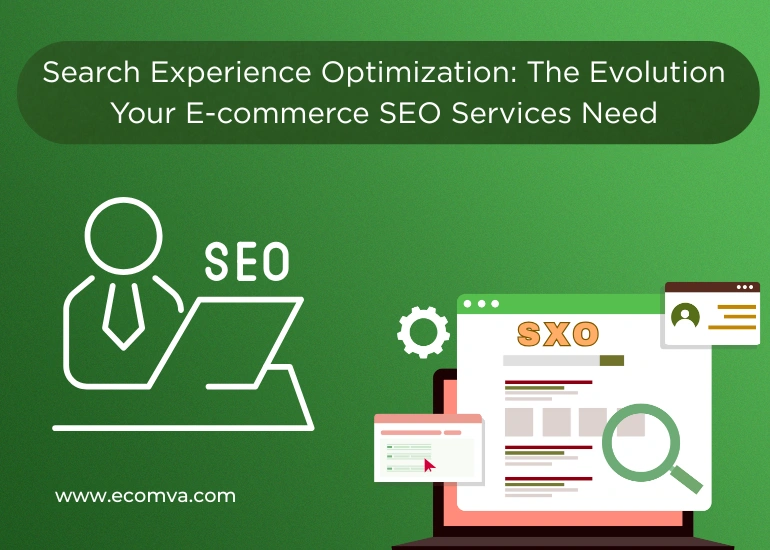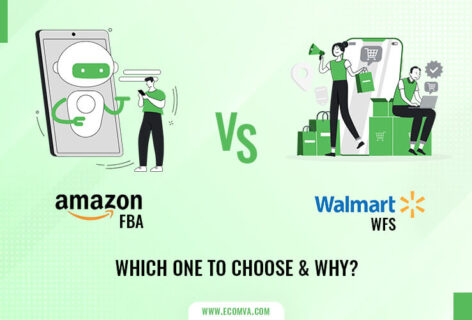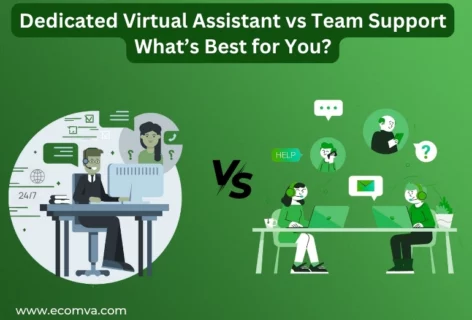Search Experience Optimization: The Evolution Your E-commerce SEO Services Need

Let us start with a brutal truth: ranking #1 on Google does not guarantee a sale.
That sting you just felt? It is the reality check modern E-commerce businesses need. According to a Forrester study, 67% of online shoppers bounce from stores that are too slow, cluttered, or confusing—even if they find them first. Search engine visibility matters, but Search Experience Optimization (SXO) is what makes those clicks count.
So if you have been investing in traditional SEO services for E-commerce websites and wondering why conversions are stuck in neutral, we are about to show you why SXO is the tune-up your strategy desperately needs.
What Is Search Experience Optimization?
Let us clear the buzzword fog.
Search Experience Optimization (SXO) is the perfect marriage between traditional SEO and user experience (UX). While SEO gets you discovered, SXO makes sure people stay, scroll, and shop.
Think of it this way—SEO brings people to the party, but SXO keeps them dancing.
The Pillars of SXO: What Makes It Work?
Here are the five pillars that make SXO work in the world of E-commerce:
1. Fast, Mobile-Friendly Pages
Page speed is a dealbreaker. A slow-loading site frustrates users and signals poor quality to search engines.
With more than half of online shopping happening on mobile, optimizing your store for speed and responsiveness is no longer optional—it is critical.
2. Intent-Based Content
Today’s users are not just typing in keywords—they are asking real questions and expecting real answers. That means your content needs to go beyond keyword stuffing. It must reflect user intent.
Whether it is a buying guide, comparison table, or a value-packed FAQ, content should be designed to solve problems instantly.
3. UX That Converts
Good user experience is invisible—it works so well, people do not even notice it. Think: intuitive navigation, clutter-free design, and frictionless checkout.
The best SXO strategies focus on guiding users through a smooth journey that ends in conversion.
4. Conversion-Focused SEO
SXO adds a conversion layer to traditional SEO. Instead of just optimizing for traffic, it focuses on what happens after the click. Well-crafted meta titles, engaging product pages, and strategic internal linking all contribute to a seamless path toward purchase.
Brands looking for the E-commerce SEO services know that visibility is only half the battle—conversion is the win.
5. Trust Signals Everywhere
Buyers want reassurance. Trust signals like product reviews, secure checkout badges, user-generated images, and detailed return policies build confidence.
For marketplace sellers, enhanced product listings—like those offered through Amazon A+ content services—can give an edge by delivering visual-rich, informative layouts that establish credibility fast.
SXO vs. Traditional SEO: Tactical Comparison
| Feature | Traditional SEO | Search Experience Optimization (SXO) |
|---|---|---|
| Focus | Rankings | Conversions and Engagement |
| Metrics | Impressions, Traffic | Click-through rate, Bounce rate, Time-on-page |
| Keywords | Volume-based | Intent-driven |
| Outcome | Visibility | Revenue and Retention |
Traditional SEO is like fishing with a net—you catch a lot, but not all are useful. SXO? That is spearfishing. Precise. Strategic. Profitable.
Why is SXO the Future-Proof Strategy?
Let us get ahead of the algorithm.
Google has confirmed it—Core Web Vitals and Page Experience are ranking factors. But more than that, customer behavior is shifting. People now:
- Want answers fast
- Expect mobile-first designs
- Hate intrusive popups
- Value transparency
If your current SEO for E-commerce websites strategy ignores these, your store is practically invisible—no matter the ranking.
That is why brands working with an E-commerce SEO agency like EcomVA are turning to SXO best practices. It is no longer about ranking more. It is about resonating better.
Implementing SXO: A Step-by-Step Framework
Step 1: Audit Your Experience
Use tools like Hotjar, Google PageSpeed, and GA4. Look for drop-off points, friction zones, and UX bottlenecks. This sets the foundation for strategic fixes.
Step 2: Map Buyer Journeys
Create user paths based on real search intent. Align each touchpoint to match what the buyer needs—whether it’s product info, trust signals, or Amazon A+ service enhancements for listings.
Step 3: Optimize for Intent, Not Just Traffic
Do not just rank—solve problems. Identify user goals and structure your pages with clarity and purpose. Make your content actionable and highly relevant.
Step 4: Design With Humans in Mind
Clear CTAs. Predictable flows. Logical navigation. Your design should guide users naturally toward conversions. This human-first focus is what makes the best Amazon content services so effective—and your site should reflect that same principle.
Step 5: Test Everything
A/B testing is your new best friend. From headlines to CTA placement, even the smallest tweaks can drive big wins. Let data—not guesswork—shape your experience strategy.
SXO Metrics That Matter
Forget vanity metrics. Here is what you should track:
- Bounce Rate – High? Your UX sucks.
- Click-Through Rate – Low? Your meta needs magic.
- Time on Page – The longer, the better.
- Conversion Rate – The big boss metric.
Need help with these? That is where EcomVA steps in—with affordable E-commerce SEO services designed to turn browsers into buyers.
Case Insight: How Brands Thrive With SXO?
A US-based electronics brand partnered with EcomVA. They had great rankings but poor conversions.
After applying SXO strategies:
- Bounce rate dropped by 32%
- Time on page increased by 48%
- Sales rose 2.4x in 6 months
Their secret weapon? An E-commerce SEO specialist from EcomVA who combined Amazon A+ content services with SXO to overhaul their listings.
Getting Started: Tools and Tactics for SXO Success
Here is your starter kit:
Tools:
- Google Search Console
- Google Analytics 4
- Hotjar or Crazy Egg
- SEMrush or Ahrefs
Tactics:
- Add schema markup
- Simplify checkout
- Use UX heatmaps
- Leverage Amazon A+ service for your product detail pages
- Work with an E-commerce SEO expert from EcomVA for ongoing results
Final Thoughts: Do Not Just Rank—Resonate
You do not need another agency that promises traffic. You need an E-commerce SEO agency that delivers value. That is why brands in the USA trust EcomVA.
Their team blends SEO services for E-commerce websites with intuitive UX, engaging content, and data-driven tweaks that actually move the needle.
And yes—they also help you create conversion-focused layouts using best Amazon content services strategies.
Ready to Transform Your Strategy?
Stop guessing. Start optimizing.
Partner with EcomVA—your go-to for best E-commerce SEO services with an SXO edge.
Explore our affordable E-commerce SEO services today and see how Search Experience Optimization can amplify your revenue.
Need help with Amazon A+ content services? We have got that covered too.
FAQs
1. Can SXO replace traditional SEO completely?
No. SXO builds on SEO. You still need strong SEO services for E-commerce websites to compete. We deliver both seamlessly.
2. Does Google consider user experience in rankings?
Yes. UX affects rankings. Search Experience Optimization addresses those factors directly.
3. Will SXO slow down my content efforts?
No. It shifts focus to what matters. EcomVA helps you publish with purpose.
4. Is SXO only about web design?
No. SXO includes speed, structure, and user intent. We approach it holistically.
5. Can SXO lower my site’s visibility if done wrong?
Yes. But using SXO best practices avoids that. We ensure every move is strategic.
6. Who can best manage SXO?
An E-commerce SEO expert with UX skills is ideal. EcomVA matches you with one who fits your goals.










